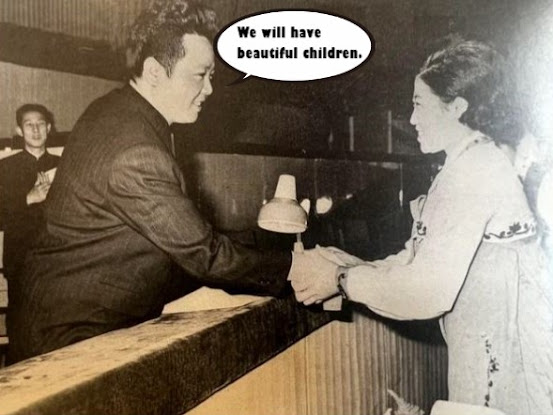ACL (pronounced eh-see-elle)
The abbreviation for anterior cruciate ligament, one of a
pair of cruciate ligaments in the human knee.
1887 (in Italian); early 20th century (in
English): The construct was anterior + cruciate + ligament. Anterior was from
the Latin anterior (that is before,
foremost). Cruciate was from the Latin cruciatus, the perfect passive
participle of cruciō, from crux (cross). Ligament was from the Middle English ligament, from the Latin ligāmentum, from ligō (tie, bind). The vital
but unexciting body part sounds much better if spoken in other European
languages including Portuguese (ligamento
cruzado anterior), Spanish (ligamento
cruzado anterior), Catalan (lligament
encreuat anterior), French (ligament
croisé antérieur) and especially Italian (legamento crociato anteriore).
Anterior cruciate ligament is a noun; the noun plural is anterior
cruciate ligaments.
In the world of acronyms and abbreviations, there are
literally dozens of other ACLs including the American Classical League which promotes the study of Antiquity and
the classics, the Association for
Computational Linguistics, a professional organization for those working on
natural language processing, the Australian
Christian Lobby, a right wing Christian pressure group which disapproves of
the last three centuries-odd, the Access
Control List, an element in computer security, ACL2, a modular software noted for its theorem prover, as code ACL, Akar-Bale language, an extinct
Great Andamanese language (ISO (International Standard) 639-3), allowable combat load, in military
aviation, the inventory of weapons system for which an airframe is rated and
the wonderful anthroponotic cutaneous
leishmaniasis, a form of Old World cutaneous leishmaniasis, usually with a
prolonged incubation period and confined to urban areas.
The long and painful history of the anterior cruciate
ligament
Ligaments of the right knee.
Descriptions of the anterior cruciate ligament (ACL) appear
in some surviving medical texts from Antiquity, the earliest known reference
thought to be in the drawings of the physician Galen (Claudius Galenus or Aelius
Galenus; 129-216) although he made no mention of injuries associated with this
body part, the aspect for which it’s now best known although there is evidence
of corrective surgery being undertaken in Ancient Egypt. Presumably, during the many centuries when falling
from horses was far from uncommon, such injuries were frequent but because neither
surgical correction nor sophisticated rehabilitation regimes had evolved,
victims had to suffer or perhaps retire from more rigorous pursuits. The Irish surgeon Robert Adams (1791-1875) in
1837 noted a clinical case of an ACL tear but in an age when treatments rightly
were conservative because the risk death from any surgical intervention was
high, Dr Adams’ report was purely observational. The literature was augmented in 1850 by the Scottish
GP (family doctor) James Stark (1811-1890) who published two cases of cruciate
tears, describing the different manifestations of knee instability in patients
with damaged ACLs but the first record of ACL repair was an operation performed
in 1895 by the English surgeon Sir Arthur Mayo-Robson (1853-1933). The early approach was the use of primary
open sutures but while this produced good initial results, decoration was
rapid. No substantive improvements in
method were reported so the suturing approach was abandoned and the profession
turned to reconstruction.
Lindsay Lohan's knees.
The Russian-born surgeon Ivan Grekov (1867-1934) is
credited with having in 1914 been the first to adopt the use of autologous
tissue (of cells or tissues obtained from the same individual) for ACL rupture
reconstruction in 1914, the technique also documented by the English professor
of orthopaedic surgery, Ernest Hey Groves (1872-1944) who performed a number of
procedures between 1917-1920. The Hey
Groves approach is strikingly modern and essentially the technique used today
but the efficacy clearly wasn’t understood because in the following decades
what the historians describe as “…a period of startling ingenuity which created
an amazing variety of different surgical procedures often based more on
surgical fashion and the absence of a satisfactory alternative than any
indication that continued refinements were leading to improved results. It is hence not surprising that real
inventors were forgotten, good ideas discarded and untried surgical methods
adopted with uncritical enthusiasm only to be set aside without further
explanation.” That to some extent may
explain why ACL reconstructions became rare and it wasn’t until the 1970s when,
as the implications of broadcasting allowed professional sport to become a
multi-billion dollar industry that with sports medicine becoming a mainstream medical
discipline that the operation became common; it was certainly a common injury. Still, innovation continued and just as there
was experimentation with xenografts (tissue graft taken from a species different
from that of the recipient.) & allografts (a tissue graft between
genetically different individuals of the same species) before the autologous
prevailed. Even synthetic graft
materials enjoyed some popularity in the 1980 and 1990s, apparently because in laboratory
testing artificial ligaments appeared to be more durable and better able to withstand
stresses and strains; real-world experience proved otherwise.
Torn ACL: Exactly what it says.
The increasing participation of female participation in elite-level (often professional) sports such as the various football codes and basketball has in recent years seen a striking rise in ACL injuries. While to reported volume of incidents is still less than those suffered in gymnastics, long the most common source, it’s in these team sports where the rate of increase has been greatest. Although the male & female knee look much the same, the physiological differences exist and, given there are differences between almost every human cell which is in some way specifically male or female, that shouldn’t be surprising. Anatomists note certain structural divergences such as those in the alignment of the leg & pelvis and the muscular protection of the knee joint, added to which the hormone estrogen is known to influence all ligaments but probably of greater consequence are the variations in neuromuscular behavior which human movement studies have documented. Essentially, these focus on the different positions of the knee and the upper body (compared to the typical male) and a striking predilection when landing to apportion most weight to one rather than both feet. Theories have been offered to account for this but the most obvious consequence is that the forces generated by landing are less absorbed by the foot and lower leg muscles (analogous with the “crumple-zones” in modern automobiles), meaning a higher proportion of the stress impacts upon the ACL of the “landing knee”. Added to this, because the typical female tends to land with the upper body tilted to the side of the “landing knee”, this imposes a greater rotational force on the ACL at the same time a vertical impact is being absorbed. This crucial aspect of behavior is known as the “ankle-dominant strategy”
Some novel research however emerged in 2024 and it may be a candidate for one of the ten Ig Nobel Prizes, awarded annual by the Annals of Improbable Research (AIR) to acknowledge “unusual or trivial achievements in scientific research”. What the study hypothesized was there might be a link between the sports bras and ACL injuries. Impressionistically, the connection is not immediately obvious and what the researchers found was not, as might be imagined, simply a product of weight distribution and the effective “multiplier effect” of mass in movement, the further it is from the pivot point, illustrated by the recommendations provided for placing weight in trailers when being towed. The physics of both are presumably vaguely similar but the interplay of factors relating to women's ACL injuries seems to be more complex.
It transpires the multiplier effect of the upper-body mass wasn’t the issue. What the international team of experts in biomechanics and sports medicine did was study 35 female recreational athletes, finding that the more supportive were the sports bras (the so-called “high-impact” designs), the greater the decrease in the common risk factors associated with ACL injuries, the “knee flexion angles” reducing, meaning the knee didn't have to bend as much on landing. Additionally, there was a reduction in “dynamic knee valgus”, the knee moving inwards from the foot, something of mechanical significance because females tend to have more inward collapsing knees (increased dynamic knee valgus) during landing activities. Dynamically, what the study revealed was that when there was no or only minimal breast support, the greater was the tendency to adopt the “ankle-dominant strategy” which had the effect of transferring the stress to the knee and thus the ACL.
By contrast, when wearing a high-impact sports bra, females Used a more “hip-dominant” strategy which puts less strain on the ACL. The mechanics of the “hip-dominant” approach is that the trunk moves less, making pelvic control easier the “…movement patterns at the trunk, pelvis and lower extremities… all connected.” The study was published in the Journal of Applied Biometrics and the study cohort of 35 included women with bra cup sizes between B & D, the findings suggesting the larger the cup size, the higher the risk of traumatic knee injury although, perhaps counter-intuitively, the researchers weren’t prepared to say that “…definitively say breast size drives injury risk…” because (1) it was a small number of participants in the study and (2) there are “…so many differences in movement patterns from person to person.” In the spirit of good research, one reviewer noted the study “…scratches the surface…" of an area that needs “…further investigation.”
Human movement studies have a long history but the bulk of the research has been on men and the presence of breasts is the most obvious difference in the bio-mechanics of movement and something which might yet have implications not yet understood. The physics of it is breasts move up and down and side-to-side during exercise and in a sixty minute session of running, they can bounce in a figure-eight pattern some 10,000 times. Traditionally, for the sports bra manufacturers the focus in advertizing has been on comfort but there are also performance effects which at the elite level can be vital because the difference between success and failure can be measured in thousands of a second and fractions of an inch. The appropriate bra can actually reduce oxygen consumption when running which translates into running economy (the distance traveled per volume of oxygen consumed) and the oxygen can be better used by the brain and muscles; also, if the breast movement minimized, the strides become longer, another aspect of economy. Those matters were known but the apparent explanation of the wrong choice of sports bra being a factor in the higher incidence of ACL injuries in women is something new.



























